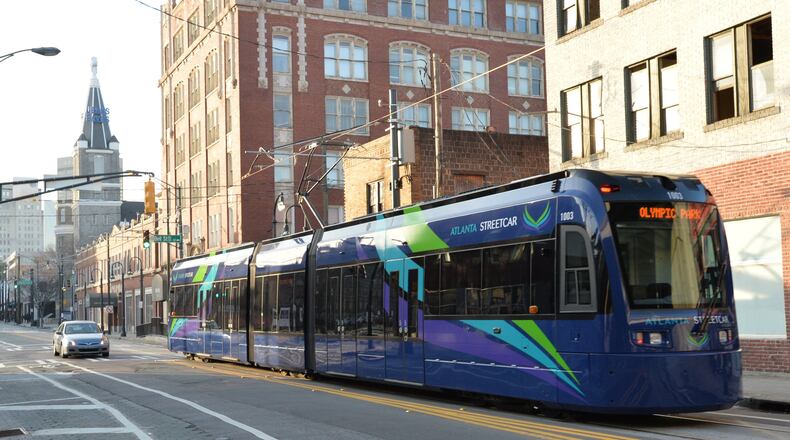With confetti, beaming public officials and picture-snapping crowds, the Atlanta Streetcar system opened a year ago after multiple delays. At the time, streetcar supporters — chief among them, Atlanta Mayor Kasim Reed — didn’t know the year ahead would entail a revolving door of staffers, scathing safety audits, equipment failures and a barrage of criticism.
“This is a project that I believe will be a model for other cities across the United States of America,” Reed boasted at its opening ceremony on Dec. 30, 2014.
An Atlanta Journal-Constitution review of the streetcar's inaugural year found that underlying many of its troubles was confusion over who was in charge of the $98 million system, as the city shared responsibility for its operation with MARTA. The AJC, through multiple open records requests, also found that streetcar boosters have overstated the system's economic development impact, and that ridership has fallen short of early projections, despite the fact that the streetcar has been free all year.
City officials acknowledge a steep “learning curve” in their first year, but believe the streetcar is accomplishing its goal of revitalizing downtown neighborhoods.
“Generally, I think the streetcar has been a success,” said Melissa Mullinax, a senior adviser to Reed. “It’s done what we hoped it would do in terms of economic development and the knitting back together of two parts of downtown that were separated by the highway.”
The streetcar's success is critical because the city has ambitious plans to grow the system to include more than 50 miles of tracks. It will, officials say, help Atlanta compete on a world stage in the coming decades. But getting the needed federal grants will likely hinge on local taxpayers agreeing to shoulder up to half of the estimated $5 billion dollar price tag.
To read about the AJC's indepth findings, visit myAJC.com or check out a Sunday edition of the AJC.
About the Author
The Latest
Featured


